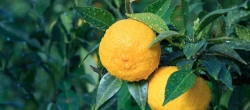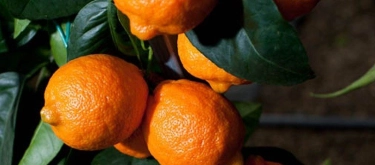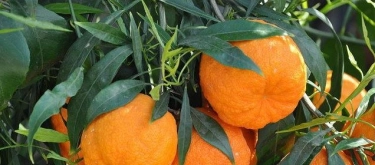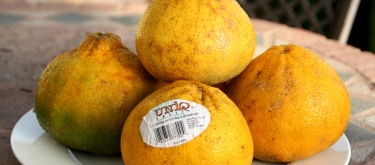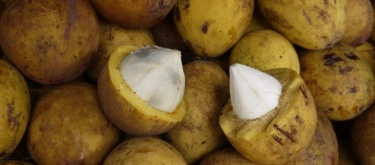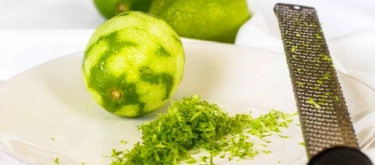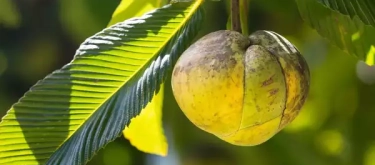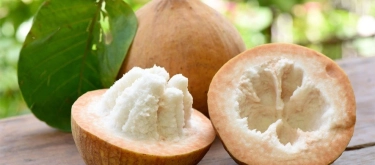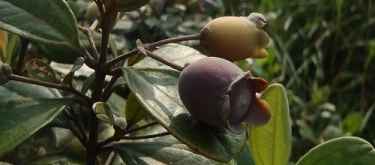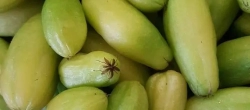Papeda: Taste Profile, Aroma, Benefits and Health Risks
Papeda (Citrus hystrix, also known as Kaffir lime, Makrut lime) is an aromatic citrus fruit native to Southeast Asia, particularly Indonesia, Thailand, and Malaysia. Highly valued for its distinctive fragrance and culinary versatility, Papeda plays a central role in regional Southeast Asian cuisines. Although less commonly eaten fresh due to intense acidity, its zest, leaves, and juice are widely used as flavoring agents in cooking and traditional medicine.
Papeda fruit is highly acidic, which may cause digestive discomfort or irritation in individuals with gastritis, acid reflux, or stomach ulcers. Those allergic to citrus fruits should exercise caution. Consumption in moderation is advised during pregnancy.
What does Papeda taste like?
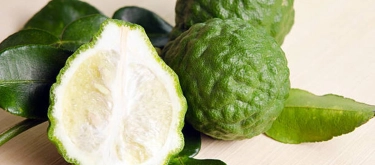
Complete Sensory Description:
Taste
Papeda fruits possess an intensely sour, sharply acidic flavor with prominent bitterness, accompanied by subtle citrus undertones. Due to this extreme tartness, they are rarely eaten raw, but their zest and juice are prized culinary ingredients.
Aroma
The aroma of Papeda fruit is highly distinctive, featuring fresh, bright, and citrusy fragrances with powerful lime notes accompanied by herbal and floral undertones, particularly reminiscent of lemongrass and citronella.
Texture
The fruit has thick, wrinkled, and bumpy skin rich in aromatic essential oils. The pulp is juicy but contains limited liquid due to dense membranes and numerous seeds, making it less succulent compared to typical citrus fruits.
Appearance
Papeda fruits are relatively small (4–7 cm in diameter), round, with rough, irregular, deeply wrinkled skin colored bright green to yellow-green when ripe. Internally, the flesh is pale green or yellowish, segmented, and filled with seeds.
In-depth Flavor Analysis:
Papeda’s distinctive flavor arises from an intense concentration of organic acids, bitter flavonoids, essential oils, and volatile aromatic compounds:
-
Acidity and Bitterness: Papeda fruit is exceptionally rich in citric acid, imparting intense sourness and sharp acidity, stronger than common limes or lemons. Bitterness derives from flavonoids such as naringin and limonin, particularly concentrated in the thick rind and pulp, creating an assertive flavor profile.
-
Sweetness Profile: Natural sugars (fructose and glucose) are present minimally, rarely balancing the pronounced acidity and bitterness. Consequently, sweetness remains barely perceptible.
-
Aromatic Complexity: Papeda’s unique aroma primarily results from essential oils rich in citronellal, limonene, and linalool. Citronellal imparts lemongrass-like citrus notes, limonene provides typical citrus brightness, and linalool adds floral-herbal complexity. Low concentrations of aldehydes further enhance freshness and fragrance.
-
Environmental Influence: Aroma and acidity levels notably vary with ripeness, cultivation practices, and regional climate. Fruits from humid tropical regions typically exhibit higher essential oil content, enhancing aromatic intensity.
Varieties and Culinary Applications:
Papeda generally refers to Kaffir lime (Citrus hystrix), but the term may occasionally include related wild citrus species. Culinary uses primarily involve:
- Zest and Peel: Widely used as aromatic seasoning, zesting into curries, soups, sauces, and marinades, providing intense fragrance and freshness.
- Leaves: Highly prized in Thai, Indonesian, and Malaysian cuisines for enhancing flavor in soups, curries, and stir-fries.
- Juice: Used sparingly in marinades, sauces, and dressings due to intense acidity and bitterness.
- Beverages: Occasionally incorporated in beverages, cocktails, or herbal infusions for intense citrus flavor.
Selection and Storage:
Choose Papeda fruits with firm, bright green, aromatic skin free from soft spots or mold. Fruits store well refrigerated in sealed containers for up to two weeks. Leaves and zest freeze exceptionally well, retaining flavor and aroma for extended periods.
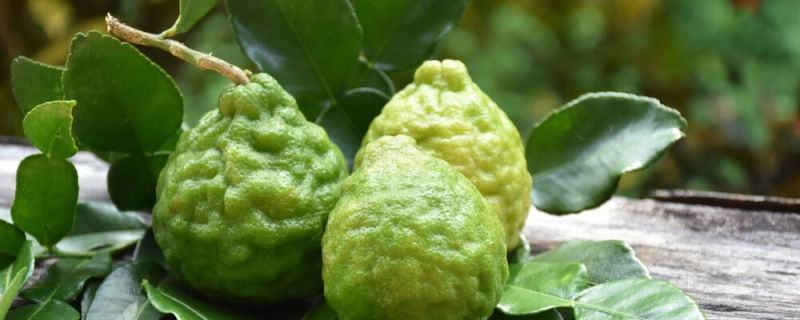
Nutritional Insights:
Papeda fruit is particularly rich in vitamin C, antioxidants, flavonoids, and essential oils. While rarely consumed in large quantities due to intense acidity, even small amounts contribute significantly to dietary antioxidant intake, immune system support, and inflammation reduction. Regular culinary use of Papeda leaves and zest helps enhance nutritional benefits, particularly immune function and cardiovascular health, valuable for populations prone to nutritional deficiencies or chronic inflammation.
Expert Insights & Culinary Tips:
- Flavor Pairings: Papeda zest and leaves pair exceptionally well with coconut milk, seafood, chicken, chili, garlic, lemongrass, ginger, and fresh herbs like cilantro and basil.
- Preparation Recommendations: Due to strong bitterness and acidity, Papeda fruit juice should be used sparingly, balanced carefully with sweet or savory ingredients. Zest is the primary culinary use, adding fragrance without excessive bitterness.
- Seed and Peel Cautions: Always remove seeds carefully due to bitterness. Peel is rarely eaten directly due to its bitterness but is valuable for zesting.
Interesting and Curious Facts:
- Papeda (Kaffir lime) leaves and zest have been integral to traditional Southeast Asian medicine, believed to possess antibacterial, anti-inflammatory, and digestive-supportive properties.
- Its distinctive aroma and intense flavor have made Papeda a symbolic ingredient in Thai and Indonesian cuisines, essential to classic dishes such as Tom Yum and Rendang.
- The name "Kaffir lime" has gradually fallen out of favor in culinary contexts due to cultural sensitivity; "Makrut lime" is now preferred internationally.
Harm and Dietary Considerations:
Excessive consumption of Papeda fruit or juice can irritate the digestive system, exacerbating gastritis, acid reflux, or ulcers due to its intense acidity. Those allergic to citrus fruits must avoid Papeda. Moderate culinary use during pregnancy is safe, but excessive intake should be avoided.
Religious Dietary Considerations:
Papeda fruit is universally permissible and does not have known dietary restrictions within major religious dietary practices, including Halal, Kosher, Hindu vegetarianism, and Buddhist diets.
Final Thoughts & Sensory Journey:
Papeda captivates with its vibrant aromatic intensity, robust acidity, and distinctive flavor. Despite rarely being eaten fresh, its zest and leaves are indispensable in Southeast Asian cuisine, adding aromatic complexity, bright citrus freshness, and nuanced flavor to countless dishes.
Resources:
- "The Citrus Industry" by Walter Reuther, Herbert J. Webber, and Leon D. Batchelor (University of California Press, 1989)
- "Citrus Fruit: Biology, Technology and Evaluation" edited by Milind Ladaniya (Academic Press, 2008)
- "Handbook of Herbs and Spices" edited by K.V. Peter (Woodhead Publishing, 2012)
